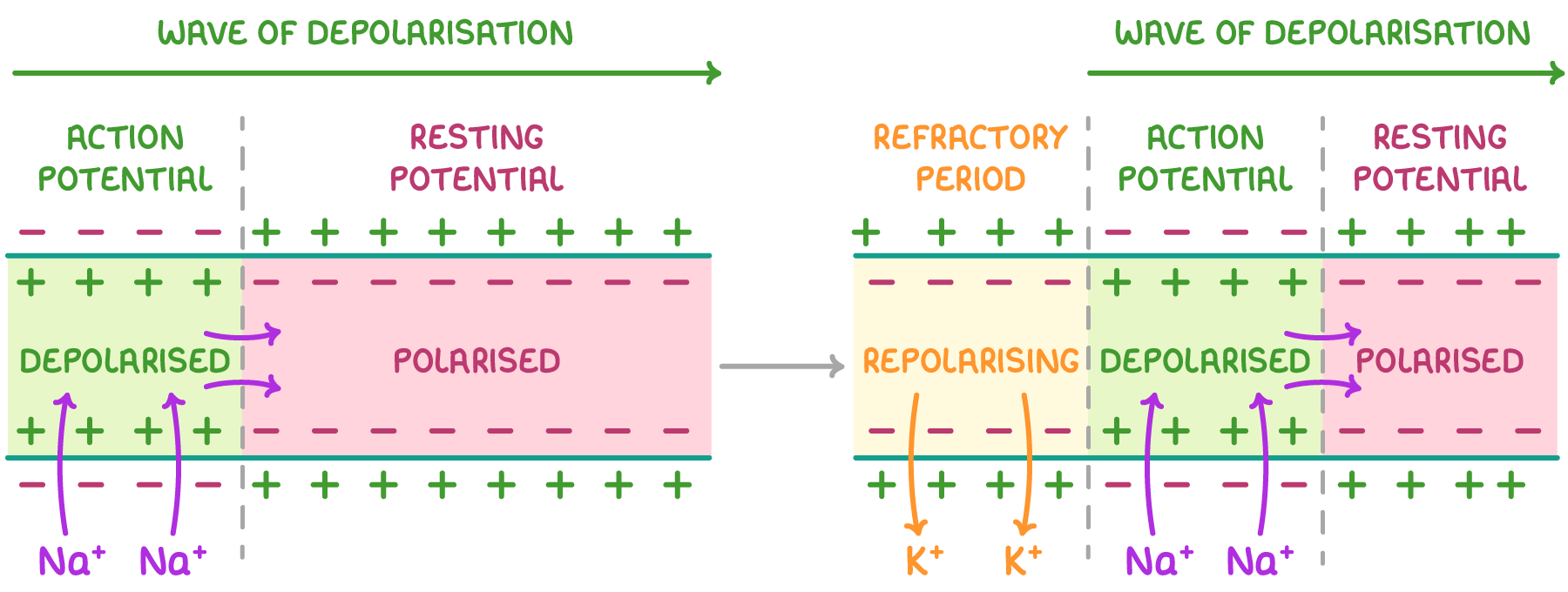Passage of Action Potentials
This lesson covers:
- The refractory period
- How action potentials travel as waves of depolarisation
- Factors affecting the speed of transmission of an action potential
The refractory period
After a neurone fires an action potential, it enters a recovery phase known as the refractory period.
During the refractory period, the neurone's membrane can't generate another action potential. This is because sodium ion (Na+) channels remain closed during repolarisation, preventing depolarisation.
The refractory period's essential roles include:
- Ensuring action potentials don't overlap.
- Limiting the frequency at which impulses are transmitted.
- Guaranteeing that impulses travel in only one direction.
The refractory period is therefore crucial for transmitting nerve impulses as distinct signals.
How action potentials travel as waves of depolarisation
An action potential initiates a wave-like movement along the neurone.

This occurs in the following stages:
- The opening of Na+ channels results in local depolarisation, allowing positive ions to spread sideways.
- Adjacent voltage-gated Na+ channels open in response to this change.
- This action leads to the depolarisation of nearby membrane areas.
- As each patch of membrane activates the next, an advancing wave is formed.
- Areas of the membrane that have just experienced depolarisation are in the refractory period and remain unresponsive while they repolarise (K+ exits the axon and Na+ channels are closed).
- This ensures that the wave moves in one direction, preventing the backward flow of the nerve impulse.
Once triggered, an action potential self-propagates through local currents along the axon without any decrease in size.
Factors affecting the speed of transmission of an action potential
Three main factors affect the speed of transmission of an action potential: myelination, axon diameter, and temperature.
Myelination
- Myelinated neurones are insulated by a myelin sheath, which enables saltatory conduction.
- This process involves action potentials 'jumping' between nodes of Ranvier, which is faster than continuous depolarisation.
- This means that myelinated neurones transmit impulses faster than unmyelinated neurones.
Axon diameter
- A larger axon diameter means there is less resistance to ion flow, so the wave of depolarisation travels faster along the axon.
- Therefore, broader axons transmit impulses faster.
Temperature
- Higher temperatures accelerate the diffusion of ions, leading to faster depolarisation and faster impulse transmission.
- However, temperatures above 40°C can cause proteins to denature, which results in slower impulse transmission due to membrane damage.